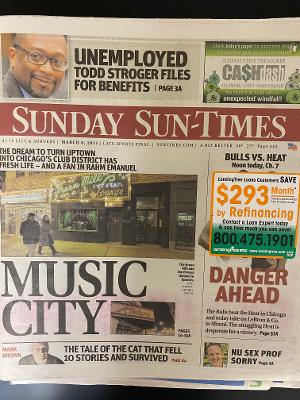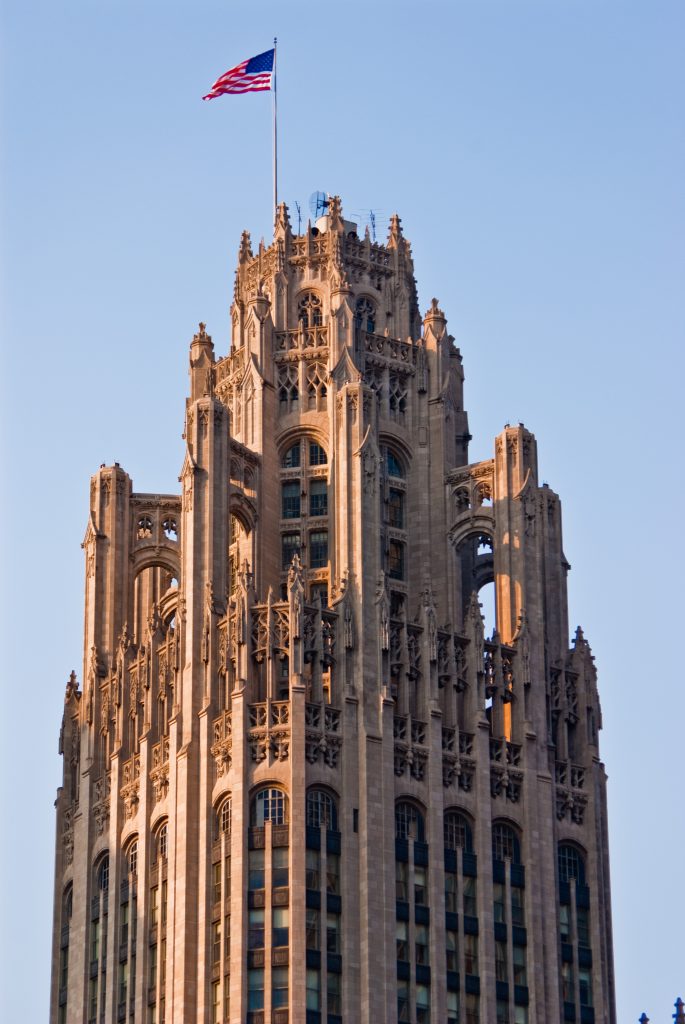Witnessing the Long, Sad Decline of Newspapers

By David A. F. Sweet
Given the media landscape, it was no surprise. The 1980s had been a banner decade for newspapers; a new national one, USA Today, was launched, and daily circulation across the land hit a peak during the Reagan Administration. Even the spread of cable TV and 24-hours news caused little deleterious effect, while the introduction of the Internet remained years away.
Today, the venerable building – with The Times chiseled in huge letters near the roof, as if no other business could ever be housed inside — sits empty. The circulation of the newspaper, where stories once jumped from page to page to try to keep up with the army of advertisements, has been sliced by about half. Its owner Patrick Soon-Shiong, the proprietor for only a few years, is already rumored to want to sell.
That day at the Times occurred at the outset of my career. Newspapers have been in a free fall ever since (I am unclear whether the two are connected). And what’s happened in Chicago – the increasingly rare two-newspaper city — is a prime example of the jaw-dropping decline.

The Chicago Sun-Times, seen here two years after filing for bankruptcy, is trying to survive as the underdog in a rare two-newspaper city.
With the announcement that Alden Capital is poised to buy the Tribune this year unless a rival bid supersedes its offer, more cuts in jobs and space for news are no doubt imminent, even after a good 20 years of staffs being decimated and bankruptcy being declared. Like the Times Building, the august Tribune Tower doesn’t even house a newspaper anymore in order to save money.
I worked for Sun-Times Media before it entered and after it exited bankruptcy. Cost control included this nugget; when our office asked for a new electronic pencil sharpener, we were asked if we could just buy a cheaper hand-cranked one instead. The number of Pioneer Press newspapers Sun-Times Media owned – a brand that once dominated the suburbs – was sliced in half, from 64 to 32 in less than a decade. Today, in a city of about 2.7 million, the Chicago Sun-Times circulation is only 120,000. Look at the paper’s Wikipedia page, and the 2010s are dominated by editorial layoffs, the closing of its photography department and the shuttering of its printing plant. It almost reads like an Onion parody: What’s a newspaper without editorial staff, photographers and a printing press?
Did all of this have to happen? No doubt it’s been a tough environment – and the costs of printing a paper and delivering it are hefty – but the falloff could have been mitigated. A long-term vision could have supplanted short-term thinking. After all, print book sales rose more than 8 percent last year; just because a product is printed doesn’t mean it’s doomed in the 21st century. But getting rid of readers’ favorite columnists and reporters year after year is a way to court irrelevance by losing subscribers. When subscribers flee, there’s no reason for advertisers to hang around. If you keep cutting newspapers to nothing, that’s the amount of business you’ll have.

After housing Chicago’s biggest newspaper for nearly a century, the Tribune Tower is being transformed into a condominium complex.
It has been amazing to me to see, both up close and from afar, how few newspaper companies invest in their own product, whether print or online. Compelling written stories draw readers – just like they compelling video stories draw viewers on Netflix – but newspapers won’t invest in reporters and others to tell these stories. (One exception is The Washington Post, which has gained hundreds of thousands of digital subscribers since Jeff Bezos and his billions have doubled the size of the newsroom.) To compound this issue of lack of investment in the business, once newspapers created online arms in the 1990s, they did not charge for content, which made absolutely no sense.
I saw the other side early in the process when I joined The Wall Street Journal at the dawn of WSJ.com a quarter-century ago. The Journal charged subscribers, and within a few years, we had more than 300,000 (today it’s in the millions). True, it helped that many subscribers could charge their subscription to their business firms. Still, a strategy that was obvious to one of the nation’s largest and most venerable papers was ignored by hundreds of others.
No doubt news on the Web appeals to consumers, and it’s hard for a paper product to compete with the immediacy, video offerings, and other compelling features of the online world. But given this, it’s amazing newspapers haven’t adjusted by ceding the breaking-news category and offering more in-depth pieces, spending money on long investigative journalism offerings, and the like. Too many front pages reflect what happened yesterday – news that has already been digested by online readers. Too many newspapers still print stock tables – wasted space when instantaneous prices can be found online. Too many newspaper stories are formulaic and, despite the fact reporters are taught to be objective, the bias in many pieces is obvious to the attuned reader.
Despite these drawbacks, there are advantages for the reader to focus on a story on paper rather than being tempted by links and assaulted by pop-up ads. Looking at newsprint is easier on the eyes than gazing at a screen, and turning a page is more satisfying than scrolling down a tablet. Every Saturday morning accompanied by coffee, I lounge in a comfortable chair and read The Wall Street Journal, Barron’s and Investor’s Business Daily, a pleasurable time where the only sound is the movement of paper.
Newspapers in the United States have enjoyed an incredible run across many centuries, but to put a twist on the famous saying, one day the presses will indeed stop. Hopefully, it’s not too soon.






